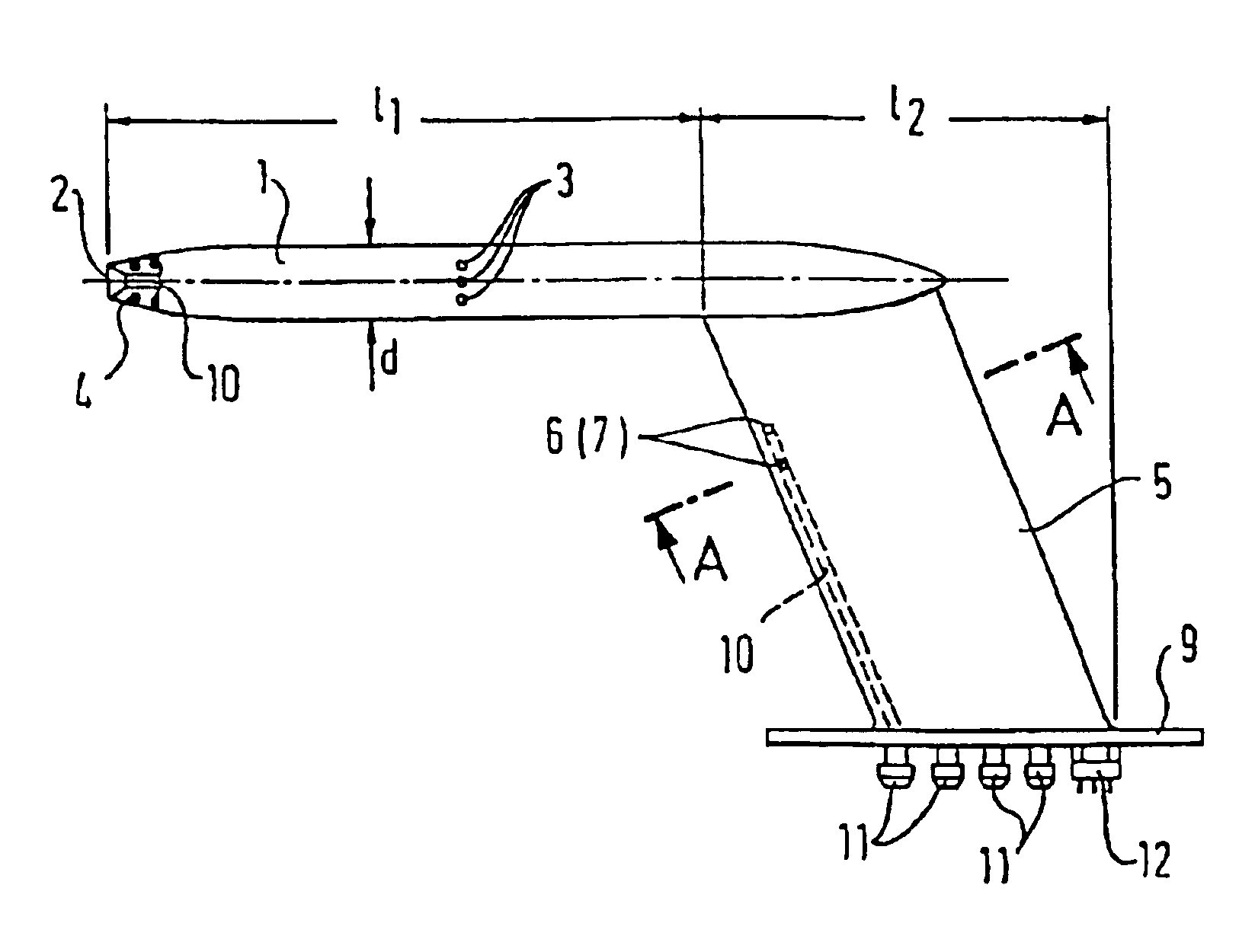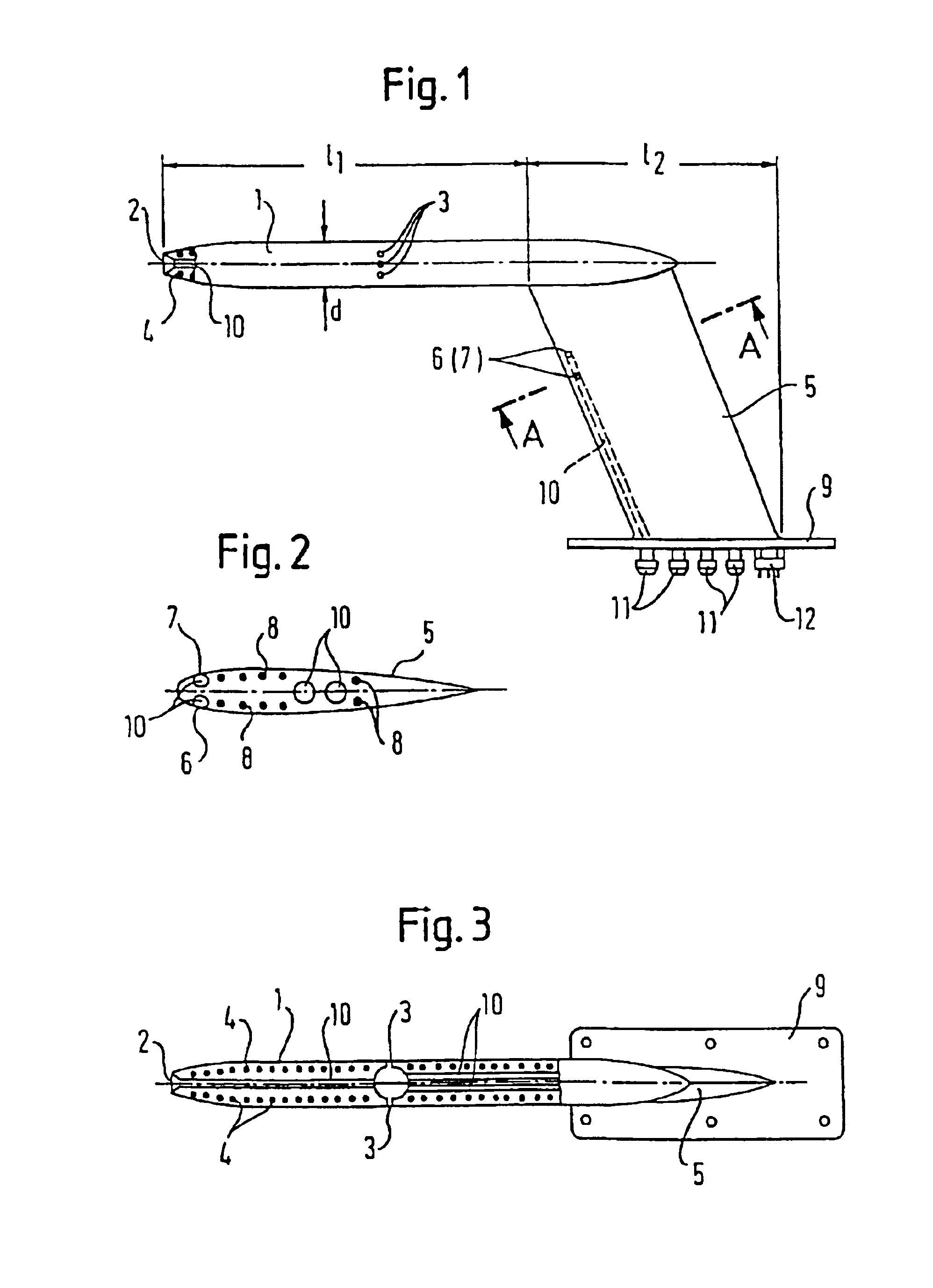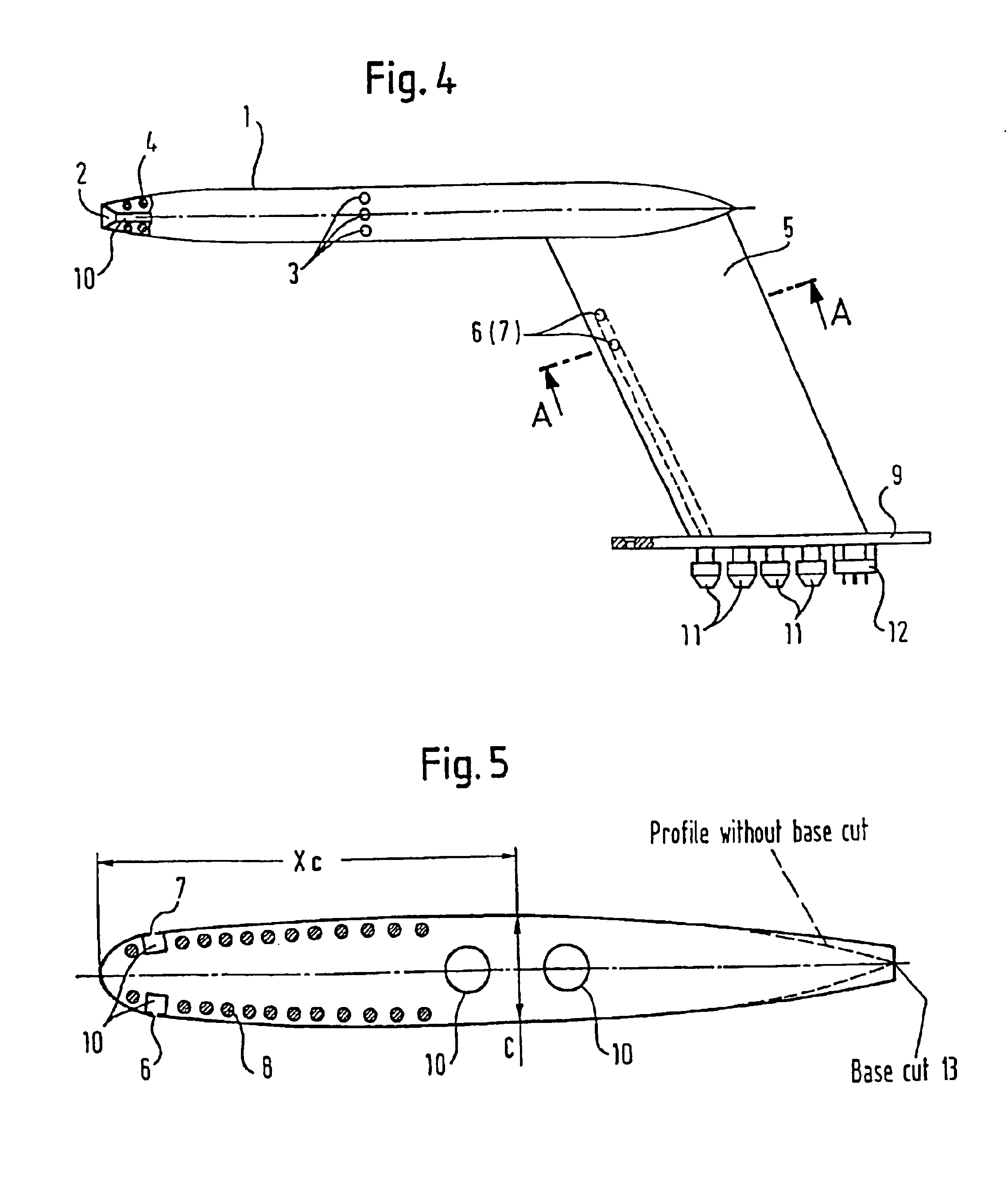Fuselage pitot-static tube
a pitot-static tube and fuselage technology, which is applied in the direction of liquid/fluent solid measurement, golf clubs, instruments, etc., can solve the problems of increased aerodynamic, increased shock drag of such a pitot-static tube, and inability to apply pitot-static tube to determine the angle of attack, so as to reduce power loss, reduce the length of the pst, and increase the design weight
- Summary
- Abstract
- Description
- Claims
- Application Information
AI Technical Summary
Benefits of technology
Problems solved by technology
Method used
Image
Examples
Embodiment Construction
[0088]The fuselage Pitot-static tube (FIG. 1) comprises an axisymmetric body 1 in whose nose part an orifice 2 is arranged for determining total pressure; orifices 3 for sensing static pressure are arranged on the lateral surface. TEHs 4 of an anti-icing system are located inside the axisymmetric body 1. The axisymmetric body is mounted on the strut 5, which has the form of a subsonic aerodynamic profile with a rounded-off nose on which there are arranged at a distance from the nose up to its maximum thickness orifices 6, 7 for determining the angle of attack, while TEHs 8 are arranged inside the strut. To reserve the orifices, several orifices 6, 7 can be arranged in each case on the upper and lower surfaces of the profile. The PST is mounted on the fuselage with the aid of a flange 9. Pressures from the orifices 2, 3, 6, 7 are lead out of the PST with the aid of airways 10 and nozzles 11, while heating the axisymmetric body and strut of the PST is performed with the aid of electri...
PUM
 Login to View More
Login to View More Abstract
Description
Claims
Application Information
 Login to View More
Login to View More - R&D
- Intellectual Property
- Life Sciences
- Materials
- Tech Scout
- Unparalleled Data Quality
- Higher Quality Content
- 60% Fewer Hallucinations
Browse by: Latest US Patents, China's latest patents, Technical Efficacy Thesaurus, Application Domain, Technology Topic, Popular Technical Reports.
© 2025 PatSnap. All rights reserved.Legal|Privacy policy|Modern Slavery Act Transparency Statement|Sitemap|About US| Contact US: help@patsnap.com



